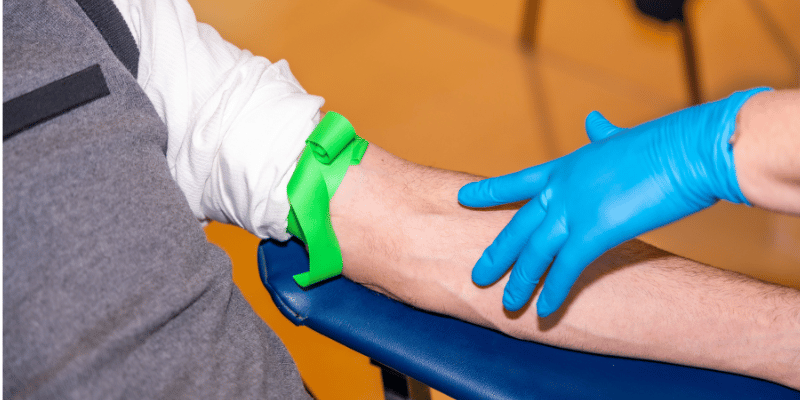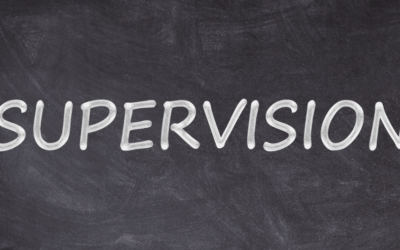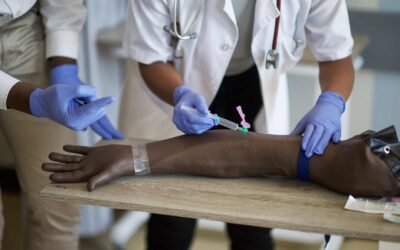I work in a nurse-led vaccination clinic, conducting venepuncture on a wide range of people from students to occupational and travel health clients. This means that many people come into clinic with certain anxieties and phobias about having their blood taken. Especially in people who have had a history of complicated venepuncture in the past or can be difficult to bleed. But how can we conduct a smooth process when carrying out venepuncture on our clients? Believe it or not, selecting the appropriate needle gauge for each person is crucial to successful venepuncture so let’s delve in deeper!
Firstly, What is Venepuncture?
Venepuncture is the drawing of blood from a vein and is one of the most common, invasive procedures in healthcare today. Healthcare workers need to be trained in venepuncture specific to the type of blood specimen they are collecting. Various blood samples can include arterial sampling, blood culture collection and venous blood draws. According to the World Health Organisation (WHO), best practice when carrying out venepuncture will protect both healthcare workers and patients to reduce injury and bloodborne exposure to other diseases. Using venepuncture devices such as retractable lancets, syringes with covers or retractable needles and plastic laboratory tubes (if needed) can be used to reduce infection, trauma, and stress to the patient or client.
What is the Difference Between the Gauges of Needles?

The measurement of a gauge needle for venepuncture is determined by its diameter and its thickness. The needle’s tip is generally bevelled to make way for easier puncturing of the skin when entering a vein to obtain the blood sample. The higher the gauge number, the thinner the needle, the lower the gauge number, the thicker the needle, enabling different blood flow and compatibilities. It is important for healthcare professionals to have an understanding of the different types of needles needed to conduct successful venepuncture, allowing a smooth process for the client.
What Size Gauge Needles Can Be Used During Venepuncture?

When I’m carrying out venepuncture, I feel for a bouncy, prominent vein, which is important in deciding what size gauge needle I am going to use. In a normal healthy adult, standard green butterfly or straight needles (21G) are generally the most suitable to use. In the majority of individuals, their veins are adequately sized and stable, making the 21G needle the optimal option. Using this needle size also helps to ensures a consistent blood flow, expediting the blood collection process. Small blue butterfly needles (23G) can be used if client’s veins are smaller and are good for younger patients, extremities and really tricky veins. However it is important to be note that due to the smaller lumen in these needles, the process of filling tubes or syringes may be slower at times.
I generally use a green (21G) or blue (23G) butterfly needle with a safety lock, which I have found to be more comfortable for the client. When the butterfly needle enters the vein, it is handy for me to see that I am in the vein correctly as I can observe a “flashback” of blood inside the line. However, a straight needle attached to a one-use holder, can also be used and they also come in black (22G) size (25G or higher gauges should generally be avoided, unless in very small infants, because red blood cells can be haemolysed, causing samples to be invalid). With straight needles however, unlike the butterfly needle, it is more difficult to see if you are in the right space until the blood bottle is attached and the suction allows blood to flow through the line and into the bottle.

While some people may be accustomed to using just a particular type or size of needle, it is recommend that everyone familiarise themselves with all needle types in order to manage veins of varying sizes. This versatility helps to promote adaptability and ensures proficiency in blood collection procedures.
The WHO recommends to “choose the gauge of hypodermic needle that fits comfortably into the most prominent vein with little discomfort.” See Table 3.1 taken from their Best practices in Phlebotomy below.

What Do We Need to Think About Before Commencing Venepuncture?

It is important to gather all your necessary equipment for venepuncture. Your typical equipment will include a clean tray to place all your items inside. They will include your chosen sterile gauge needle, holders, blood collection tubes, an alcohol wipe, disposable tourniquet, gloves, cotton wool, tape or plaster(s). Ensure you have your sharps box near to where you will be carrying out venepuncture on the client. That way it is easier to dispose of your gauge needle straight away and reduce the chance of any needle-stick injuries.
It is important you confirm your client’s details to ensure you have the right person and that you are carrying out the correct blood test. You should communicate with your client to explain the procedure and to check they are comfortable. Consent, whether verbal or written, should always be given by the client before venepuncture or any other procedure takes place. Some clients may have a needle phobia and it is important to ask them if they prefer to sit up or lay down during the venepuncture process. Ensure that their arm is extended and supported. I like to use a pillow, which I place under the arm for extra support. When feeling for a vein, it is important to examine both arms as best practice as one arm may have more prominent veins than the other.
What Are The Steps Involved in the Venepuncture Process?

Always wash your hands using the correct procedure prior to touching your patient, donning gloves and taking blood. The Aseptic Non–Touch Technique (ANTT) approach should be used and has been shown to significantly improve the aseptic technique of healthcare workers and reduce the numbers of Healthcare Associated Infections.
When locating a vein, you should tie your disposable tourniquet around the lower deltoid region (around 4–5 finger widths above the venepuncture site) to allow the veins to stand out. When looking for a vein, you’re feeling for a nice bouncy, juicy vein, which is visible or palpable under the skin situated within the antecubital fossa area. Sometimes clients can present with very tricky veins and need to have blood taken from their hand. However, it is advised that you are trained on conducting venepuncture in this area if you have not taken blood from the hand before.
Once you are satisfied you have an adequate vein to conduct venepuncture, ensure to use an 70% alcohol wipe to decontaminate the skin and then allow to dry for 30 seconds. When the skin is dry, anchor the vein below the puncture site and you are now ready to insert your gauge needle. When piercing the skin, make sure to insert the needle at a 30-degree angle or less and ensure that the bevel of the needle is facing upwards to allow a gentle piercing. Once the needle has been inserted into the vein, attach the blood tube to allow the blood to flow through the line and into bottle. When you have retrieved enough blood, retract the needle, and dispose immediately into a sharps box. Don’t forget to add pressure to the site with cotton wool or gauze to reduce bleeding or bruising at the site. Ask the patient to hold this in place, and ensure bleeding has stopped before a plaster is applied.
What Factors Should Be Considered When Choosing Needle Gauge Sizes in Venepuncture?

When deciding on the appropriate needle gauge to use for venepuncture, a few factors should be considered to ensure the client is as comfortable as possible when obtaining a successful blood sample.
Client’s Vein Size:
You should assess the size and condition of the client’s veins first. I have known veins to be large and supple, moving sidewards as I pierced the skin with the needle, causing me to miss the vein. I have seen veins of a larger, more juicy size to bruise easier than other prominent, smaller veins. Sometimes, in my experience, I have found that a blue gauge needle (23G) allows the vein to remain in position and reduces bruising than if I was to use a green gauge needle (21G). However, everyone is different, and it depends on your intuition, if you have attended the venepuncture course and are confident to carry out venepuncture in a safe way.
Client’s Age:
We should consider the client’s age. If we are carrying out venepuncture on an infant or a young child, a small gauge needle should be used as they will have smaller veins. Older adults may have fragile, less prominent veins and a smaller gauge needle may also be preferable. Hydration plays an important role in successful venepuncture. It is always advised that the client drink plenty of fluids before venepuncture to ensure enough blood is obtained.
Patient’s Medical Conditions:
Always check with the client first, to see if they have any medical conditions before carrying out venepuncture. Your client may be living with a condition and is taking certain medications, which can impact how we conduct venepuncture. For example, does the client have a history of deep vein thrombosis and takes warfarin? If so, this can cause them to bleed more than usual, and they can bruise quite easily after venepuncture. Patients with haemophilia or clotting disorders may require a larger needle to ensure adequate blood flow into the blood bottle. It is always a good idea to apply extra pressure to the area with cotton wool or gauze, to reduce bleeding or bruising at the site after venepuncture is complete.
Required Blood Sample:
We should consider the volume and the type of blood sample that is required during venepuncture. For example, if testing a client for Tuberculosis infection, it is wise to use a standard straight needle and blood vacutainer to obtain the sample as air will not need to be expelled and we can acquire the sample straight away. However, if we were to use a butterfly needle, we would have to prime the line before obtaining a sample, which takes time and can make the client feel more anxious.
Being aware of what is more comfortable for the client if they are nervous or stressed is paramount in choosing the right needle gauge during venepuncture. So, in this instance, I would say a standard straight needle and blood vacutainer would be beneficial as you don’t have to prime the line and you can get your blood sample into the bottles straight away, limiting the amount of time venepuncture is being conducted and reducing the amount of anxiety the client may experience.
Needle Penetration Depth:
The depth of needle penetration is also an important factor. If a client has superficial veins, a small needle gauge would be beneficial, whereas a larger needle gauge would be ideal for deeper veins to reach the required depth.
Finding Confidence When Choosing the Correct Size Gauge Needle for Venepuncture

When conducting venepuncture, it is important to use good clinical judgement and consider the above factors when selecting the appropriate needle gauge for each client. Regular communication with the client and monitoring their comfort before, during and after obtaining your blood sample, is crucial to carrying out a successful and safe venepuncture technique. Keeping up to date with your venepuncture learning and development is also crucial to improving your skills and will allow you to follow the latest guidance surrounding venepuncture practices.
Why not reflect on your learning from this article as part of your Continuing Professional Development (CPD). Click below to fill out a short form which can be emailed to yourself for your own records.
CPD Reflective Practice

Training at Health Academy
It is important that anyone undertaking Venepuncture/Phlebotomy as part of their job is suitably trained. Whether you’re a total beginner or simply wanting to update or refresh your blood taking skills, Health Academy have a phlebotomy training course for you! Visit our Phlebotomy Venepuncture Courses Page for more information.



